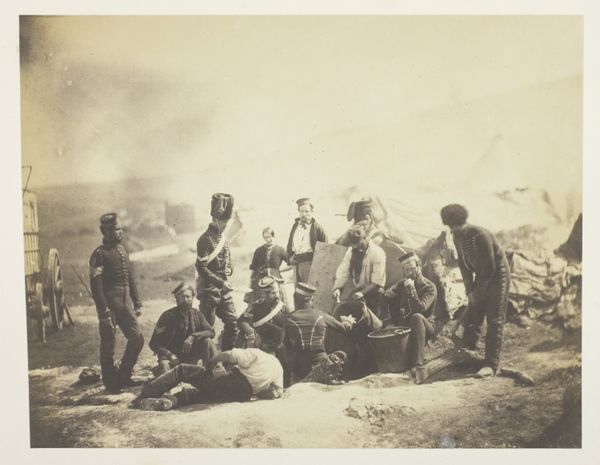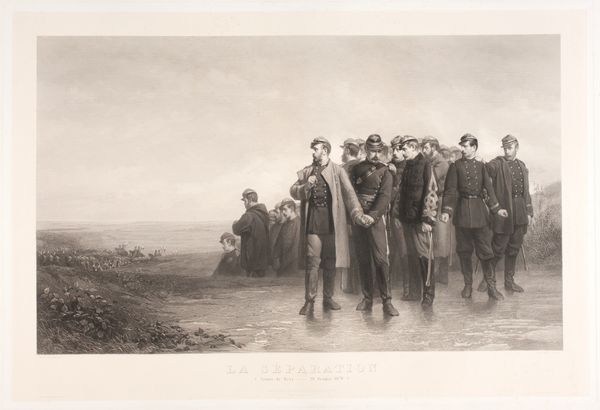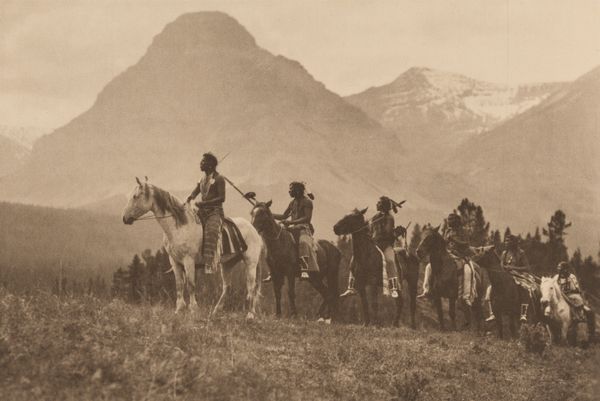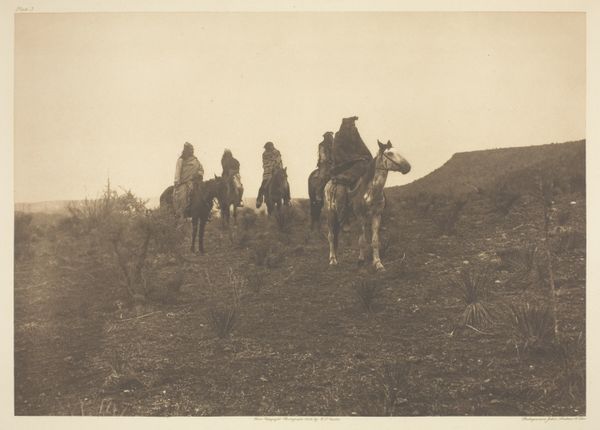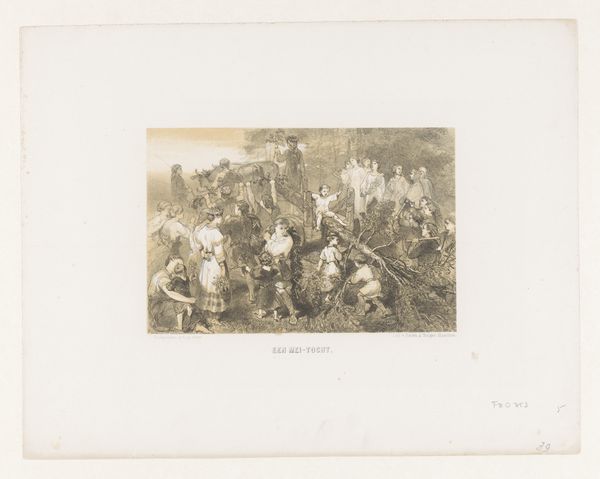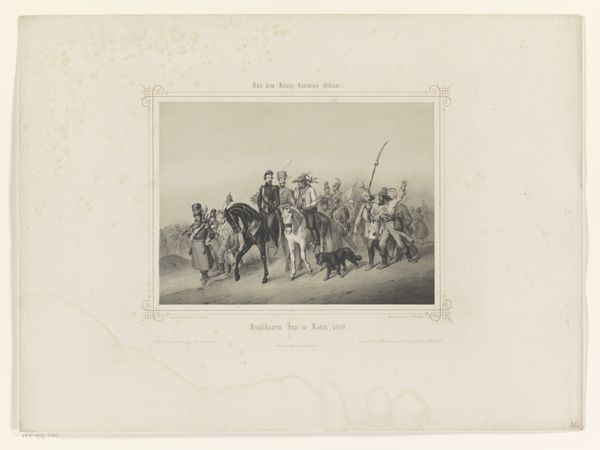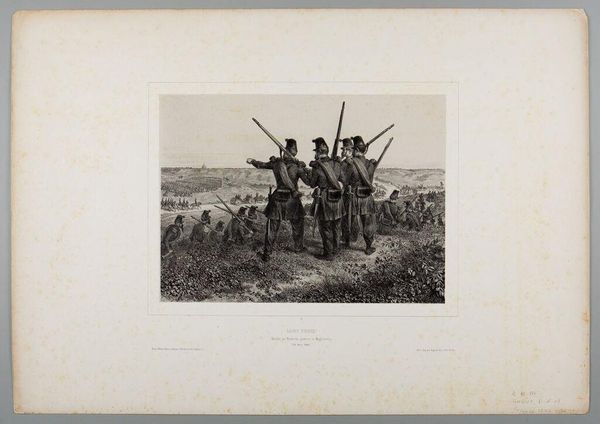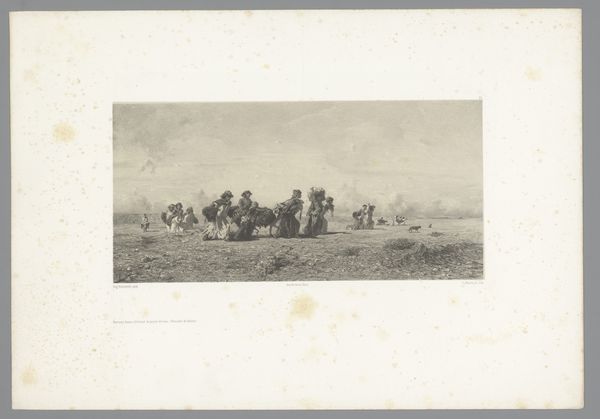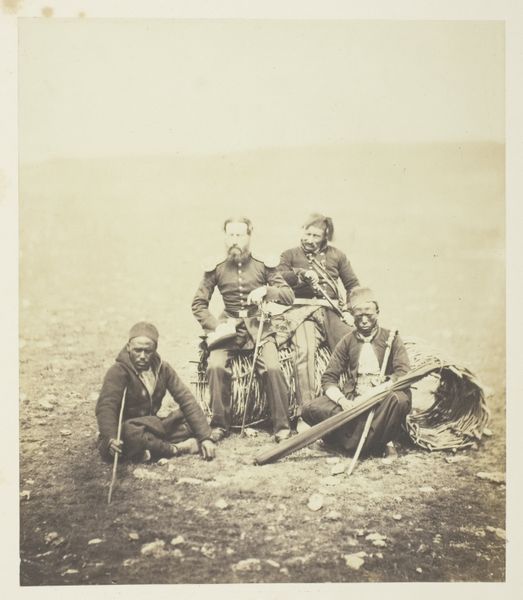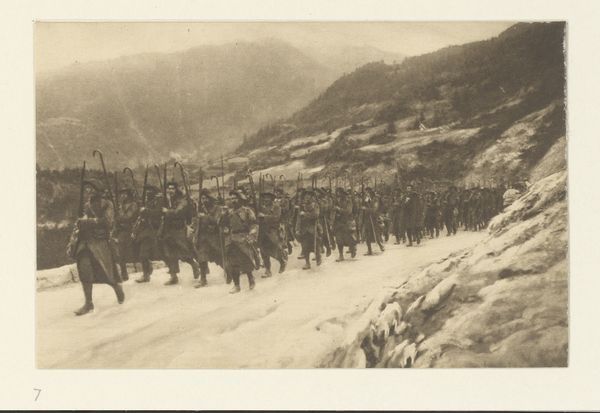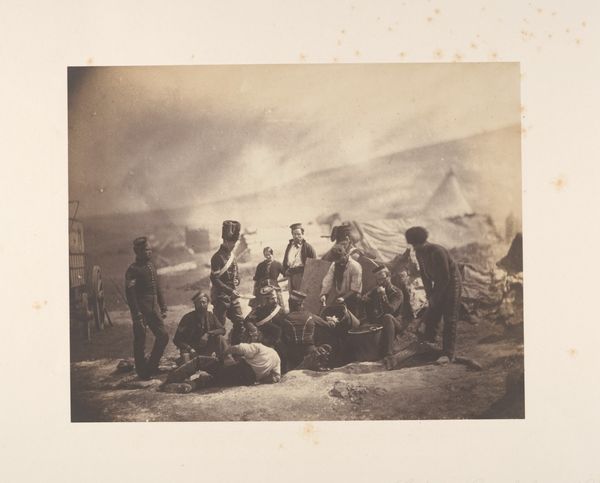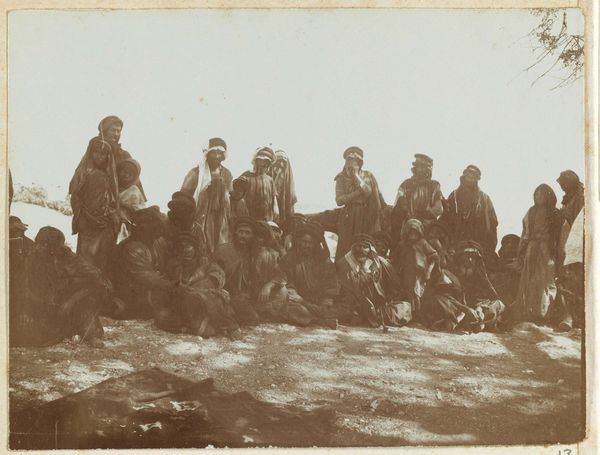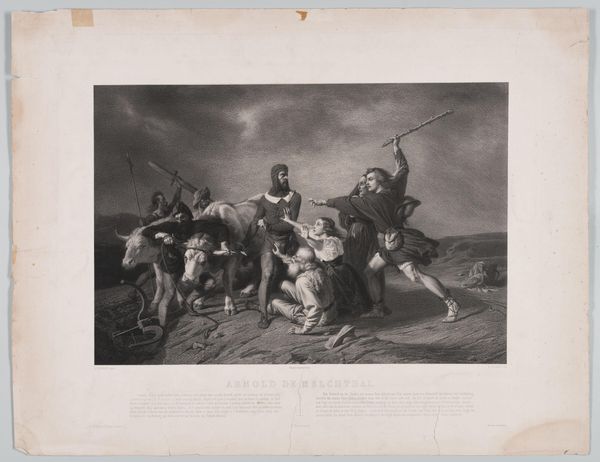
drawing, print, engraving
#
drawing
#
narrative-art
# print
#
history-painting
#
engraving
Dimensions: 607 mm (height) x 895 mm (width) (plademaal)
Editor: So, this is "The Morning Before the Battle" by Joel Ballin, made between 1848 and 1870. It’s a drawing and print, an engraving showing soldiers on the move. I find it quite somber, filled with a sense of foreboding, don’t you think? What captures your attention in this piece? Curator: Somber is a great word for it! It feels suspended, that moment before the plunge. For me, it’s the gaze of that lone officer in the foreground. He's separated from the marching column, almost existing in a different space. What's he seeing, do you suppose? Or more importantly, what’s he *not* seeing? Perhaps the reality of what's coming? I bet the artist might have pondered the ethics of war at a time like this. Editor: That's a beautiful point. I was so focused on the group, the impending battle itself, that I hadn't considered the psychological space of that individual. It looks like he's on the verge of making a choice. It reminds us about the personal costs of wars. What would a "morning before the battle" even feel like for the average soldier, though? Curator: Precisely! And the fact it’s an engraving gives it that stark, almost clinical feel, stripping away any romanticism one might associate with warfare. Think about the date, too. Mid-19th century Europe…revolution, nationalistic fervor. I find myself imagining the individual stories lost within the sweep of history. Do you find the landscape itself contributing to this sense of melancholy? Editor: Absolutely! It’s not grand or heroic, just…ordinary. It enhances the idea that this is just another day, but with extraordinary, terrifying implications. Thinking about the date adds a new layer as well. Curator: Indeed! Perhaps, that's the power of this work: It reminds us that even in the grand narratives of history, it boils down to individuals facing impossible choices on very ordinary mornings. Editor: I'll definitely see it in a different way now! I'm glad to now look at both at individual introspection and broad historical conflicts contained in the piece.
Comments
No comments
Be the first to comment and join the conversation on the ultimate creative platform.
